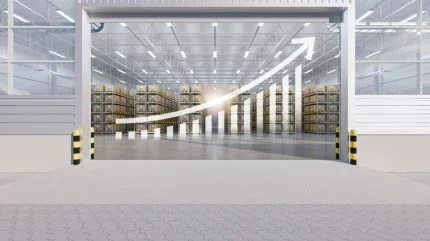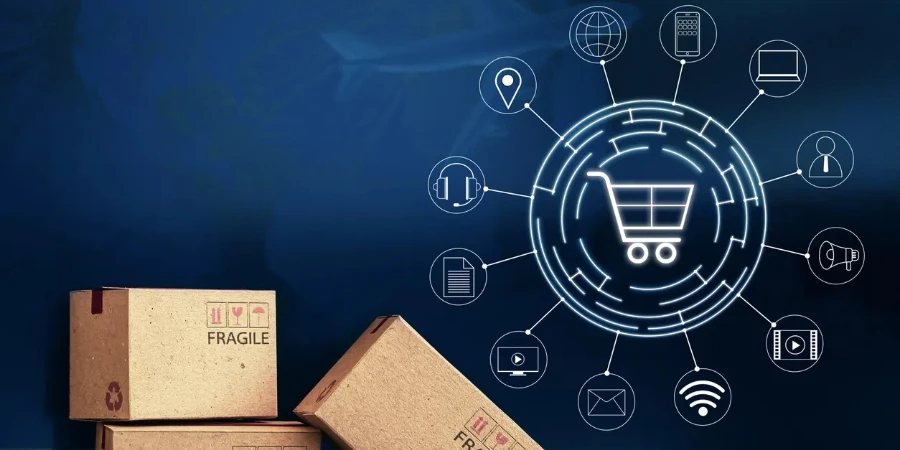From production to shelves, packaging ensures product integrity, streamlines logistics, and enhances appeal.

In the vast landscape of modern industry, packaging stands as a crucial pillar supporting the functionality and performance of production, logistics, and marketing systems.
With the global packaging market projected to be worth approximately USD 1.14 trillion in 2024 and expected to grow to USD 1.38 trillion by 2029, the significance of packaging cannot be overstated.
This article delves into the essential role of packaging, exploring its impact on various sectors and the materials utilised in its creation.
The integral role of packaging in production systems
Packaging is the linchpin in the production systems of numerous industries. It begins with the conversion of raw materials into functional packaging, a process that requires precision and innovation.
The primary materials used include paper and board, plastics, metal, glass, and wood. Each of these materials has unique properties that make them suitable for different types of products.
For instance, paper and board are favoured for their sustainability and recyclability, making them ideal for the food and beverage sector, which constitutes about 50-60% of the total packaging market.
The production phase demands packaging solutions that not only protect products but also enhance their shelf life and maintain their quality. In the health care and cosmetics sectors, which are significant end users of packaging, the need for sterility and preservation is paramount.
Packaging materials must comply with stringent regulations to ensure that they do not react with the products they contain. Innovations in materials science continue to drive the development of advanced packaging that meets these rigorous standards while also being cost-effective and environmentally friendly.
Enhancing logistics efficiency through optimised packaging
Logistics, the backbone of any supply chain, relies heavily on the efficiency of packaging.
Properly designed packaging facilitates easier handling, storage, and transportation of goods, thereby reducing costs and improving efficiency. The materials used in packaging must offer durability and protection against physical damage during transit.
Plastics, with their lightweight and robust nature, play a significant role in this regard. They are commonly used in the production of pallets, crates, and shrink wraps, ensuring that products are safeguarded against the rigours of shipping.
Moreover, the logistics sector benefits from packaging that is designed for stackability and space optimisation. This not only maximises the use of storage space but also minimises the environmental impact by reducing the volume of materials needed.
For instance, collapsible and reusable packaging solutions are becoming increasingly popular, offering significant cost savings and sustainability benefits.
The advent of smart packaging technologies has further revolutionised logistics. Incorporating RFID tags and QR codes into packaging allows for real-time tracking and monitoring of products throughout the supply chain.
This enhances inventory management and ensures that products reach their destinations on time, in optimal condition, and with improved traceability.
Packaging as a powerful marketing tool
Beyond its functional roles in production and logistics, packaging serves as a potent marketing tool. It is often the first point of contact between a product and the consumer, playing a critical role in influencing purchasing decisions.
Effective packaging design communicates brand values, product information, and can differentiate a product in a crowded marketplace.
The food and beverage sector exemplifies the importance of packaging in marketing. Attractive, informative, and convenient packaging can significantly boost a product’s appeal.
For example, the use of transparent materials in food packaging allows consumers to see the product inside, fostering trust and encouraging purchase.
Similarly, innovative packaging designs, such as resealable bags and portion-controlled packs, cater to consumer preferences for convenience and sustainability.
In the health care and cosmetics sectors, packaging must convey a sense of luxury, efficacy, and safety. High-quality materials such as glass and premium plastics are often used to create an upscale image.
Additionally, packaging must provide comprehensive information about the product’s ingredients, usage instructions, and regulatory compliance. This not only ensures consumer safety but also builds brand credibility and loyalty.
The rise of e-commerce has further underscored the importance of packaging in marketing. With consumers increasingly purchasing products online, the unboxing experience has become a vital aspect of brand differentiation.
Thoughtfully designed packaging that provides a memorable unboxing experience can drive positive reviews and repeat purchases, thus playing a crucial role in a brand’s overall marketing strategy.
The industry must innovate and adapt to evolving needs
Packaging is undeniably a cornerstone of production, logistics, and marketing systems. Its role extends far beyond mere containment and protection; it influences efficiency, sustainability, and consumer perceptions.
As the global packaging market continues to expand, driven by demand from sectors such as food and beverage, health care, and cosmetics, the industry must innovate and adapt to meet evolving needs.
Embracing sustainable materials, advanced technologies, and creative designs will be key to unlocking the full potential of packaging in the years to come.
Source from Packaging Gateway
Disclaimer: The information set forth above is provided by packaging-gateway.com independently of Alibaba.com. Alibaba.com makes no representation and warranties as to the quality and reliability of the seller and products.





 Afrikaans
Afrikaans አማርኛ
አማርኛ العربية
العربية বাংলা
বাংলা Nederlands
Nederlands English
English Français
Français Deutsch
Deutsch हिन्दी
हिन्दी Bahasa Indonesia
Bahasa Indonesia Italiano
Italiano 日本語
日本語 한국어
한국어 Bahasa Melayu
Bahasa Melayu മലയാളം
മലയാളം پښتو
پښتو فارسی
فارسی Polski
Polski Português
Português Русский
Русский Español
Español Kiswahili
Kiswahili ไทย
ไทย Türkçe
Türkçe اردو
اردو Tiếng Việt
Tiếng Việt isiXhosa
isiXhosa Zulu
Zulu